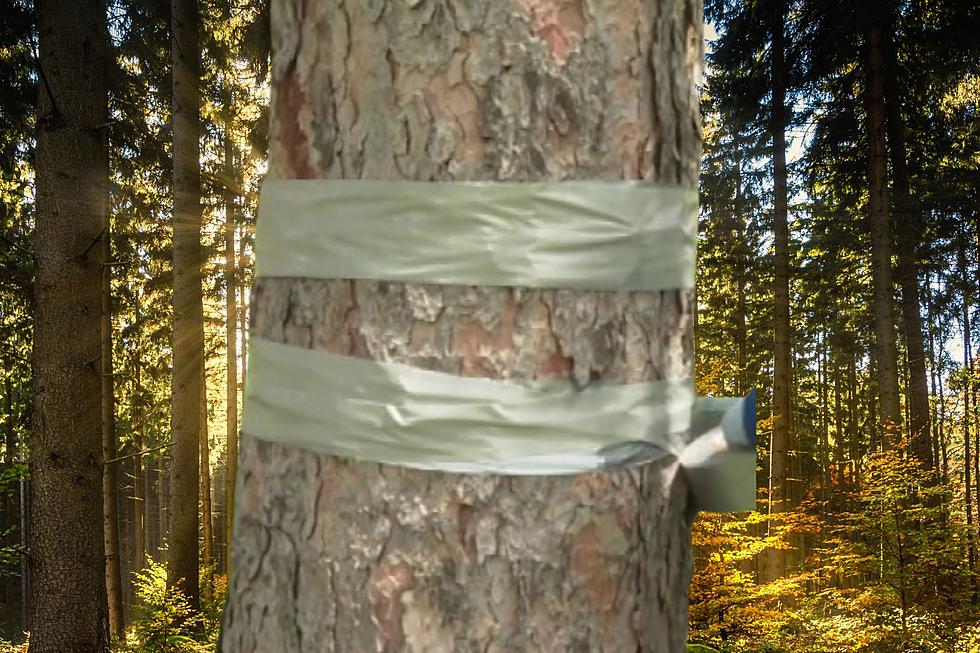
Grand Rapids Asks Residents to Help Control Spongy Moth Population This Spring
If you've ever seen duct taped wrapped around trees in the springtime, here's what's going on...

The City of Grand Rapids is asking residents to help control the population of an invasive species.
The Spongy moth puts the City's urban tree canopy at risk.
What is a Spongy Moth?
Spongy moth (Lymantria dispar, formerly "gypsy moth") is an invasive species that has been in Michigan for more than 40 years.
Spongy moth egg masses can contain over 1,000 larvae that hatch into leaf-eating caterpillars.
When the caterpillars significantly defoliate trees, the trees become weaker and vulnerable to diseases, which could kill them.
How to Identify Spongy Moth
According to the Michigan DNR:
- Spongy moth caterpillars emerge from tan, fuzzy egg masses in April and feed on leaves through late June.
- Caterpillars are hairy, with a yellow and black head and 5 pairs of blue spots, followed by 6 pairs of red spots.
- Mature caterpillars are 1.5 to 2 inches in length.
- Leaf debris and small, round frass found under trees are indications of gypsy moth infestation.
- Male moths' wings have a wavy pattern of brown to dark-brown and span 1.5 inches.
- Female moths are larger than males and do not fly. Wings are white to cream with wavy black markings.
How You Can Help Control the Population of Spongy Moth
The City of Grand Rapids says its Forestry division does its best to target and treat the most densely populated areas of spongy moth but relies on community members to help with the rest.
Here's how you can help, and where the duct tape comes in:
Now through late April: Look for egg masses on tree trunks and scrape them into a cup of soapy water using a plastic putty knife or other dull scraping tool.
Egg masses are light brown, sponge-like in appearance and about the size of a quarter. Let them soak overnight, then bag and dispose of them. Michigan DNR says egg masses can also be placed in a fire and burned.
Late April through late May: Wrap a double band of duct tape around tree trunks with the sticky side facing out to prevent hatched caterpillars from moving up the tree to the leaves.
You can find out more about Spongy Moth here.
Michigan's Deadliest Animals & Critters
More From 97.9 WGRD









